Introduction
Social media marketing tips is a vital tool in today’s digital world since it has revolutionized the way companies interact with their audiences. Brands may increase revenue, communicate with a variety of demographics, and raise visibility using platforms like Facebook, Instagram, LinkedIn, TikTok, and X (previously Twitter). These platforms present special chances to share engaging information, highlight goods, and cultivate deep connections with clients.
From visually striking Instagram posts to LinkedIn professional networking and TikTok viral trends, companies may customize their approaches to suit their objectives and target audience. Furthermore, accurate targeting and performance evaluation are made possible by sophisticated tools like analytics, automation, and advertising, guaranteeing optimal return on investment.
Businesses may improve their online presence, increase client loyalty, and see quantifiable development by selecting the appropriate channels, producing interesting content, and maintaining consistency. Social media marketing Tips is now essential for success in a cutthroat industry.
Choosing the Right Social Media Platforms for Your Brand
1. Facebook: Building Communities and Enhancing Engagement
With more than 2.9 billion monthly active users, Facebook continues to be one of the most flexible social networking sites. It’s a great platform for companies looking to use powerful advertising capabilities, interact with their audience, and create strong communities.

- Why Choose Facebook? Facebook is ideal for building client loyalty since it lets companies create pages, groups, and events. For small to medium-sized businesses looking to reach a wide audience, it’s perfect.
- Advantage of Advertising: The platform is an effective tool for acquiring new customers since its advertising solutions, like Facebook Ads Manager, allow for precision targeting based on demographics, interests, and behaviors.
- Use Case: Facebook can be used by a neighborhood bakery to advertise new gluten-free goods, target local clients with adverts, and organize events for in-store promotions.
2. Instagram: Visual Storytelling for Creative Brands
For brands like fashion, beauty, food, and travel that primarily rely on visual content, Instagram is the preferred medium. It gives companies dynamic ways to interact with their audience with features like Stories, Reels, and Shopping.

- Why Choose Instagram? Businesses can artistically display their items because to its visually appealing interface. The platform is perfect for influencers and marketers aiming to reach millennials and Gen Z since it feeds on aesthetic appeal.
- Interactive Features: Make use of Reels for brief, captivating videos that have the potential to go viral and Instagram Stories for polls, quizzes, and swipe-up links.
- Use Case: Instagram Shopping can be used by a clothes store to display their inventory, enabling customers to peruse and buy straight from the platform.
3. LinkedIn: Professional Networking and B2B Marketing
LinkedIn is the best social media site for companies that specialize in professional services, corporate branding, and business-to-business (B2B) marketing. It serves as a gathering place for business leaders, decision-makers, and job searchers.

- Why Choose LinkedIn? Through thought leadership content like articles, case studies, and white papers, LinkedIn enables companies to build authority. Additionally, businesses can utilize it to highlight their culture and attract talent.
- Features of Advertising: One of the best options for B2B marketers is LinkedIn Ads, which are ideal for targeting professionals according to job title, industry, and firm size.
- Use Case: Through sponsored content, a digital marketing firm may engage with prospective customers, share success stories, and create leads on LinkedIn.
4. X (Formerly Twitter): Real-Time Engagement and Updates
For brands that depend on real-time updates and active client engagement, Twitter—now known as X—is an essential social media tool. Breaking news, instant updates, and participating in popular discussions are among its frequent uses.

- Why Choose X? For brands operating in sectors where being current and responsive is essential, such as technology, media, and customer service, it’s the perfect platform.
- Engagement Tools: Post surveys to get feedback, use hashtags to join popular conversations, and interact with followers directly by mentioning and replying.
- Use Case: Using X, a software company can interact with customers in real time to get their comments and live-tweet product debuts.
How to Decide on the Best Platform for Your Brand
Take into account the following elements while selecting a social media marketing tips platform:
- Target target: Align the platform with the preferences and demographics of your target.
- Content Type: Select a platform that accommodates your preferred format, be it text, photos, or video.
- Goals: Match platform features to your marketing goals, including sales, lead generation, or brand exposure.
Your company can generate substantial growth, establish brand loyalty, and gain meaningful interaction by choosing the appropriate social media marketing tips platform.
Creating Engaging Content: The Key to Social Media Success
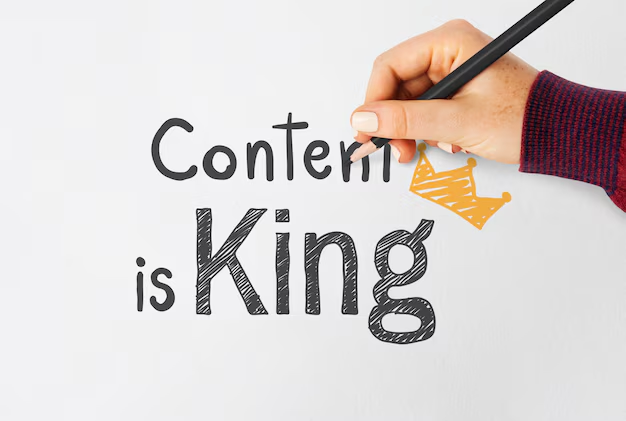
The foundation of every effective social media marketing tips is content. It’s how companies draw in customers, cultivate connections, and motivate action. Focus on producing educational, interesting, and aesthetically pleasing material if you want to genuinely engage your audience. This is a thorough explanation of the many kinds of content and how to optimize their impact.
1. Video Content: The Power of Visual Storytelling
One of the most captivating types of material on social media marketing tips platforms has been shown to be video. It has the ability to rapidly capture attention, effectively express emotions, and quickly explain complicated concepts.

- Short-Form Videos: Short, powerful videos are the lifeblood of platforms such as YouTube Shorts, Instagram Reels, and TikTok. These are ideal for offering brief advice, promoting items, or joining popular challenges.
- Live Streams: You may engage with your audience in real time by holding live sessions on websites like Facebook, Instagram, or YouTube. Give behind-the-scenes tours of your company, launch new goods, and hold Q&A sessions with live streaming.
- Stories: Facebook Stories and Instagram Stories are excellent platforms for capturing brief, genuine moments. Share polls, daily updates, and interactive elements like quizzes with them.
Example: A skincare firm can offer a live stream to talk about skincare recommendations or use a brief video to show how to apply a product.
2. User-Generated Content: Building Trust and Community
Content produced by your clients or fans that highlights their interactions with your business is known as user-generated content, or UGC. Potential clients find this kind of content to be very genuine and trustworthy.
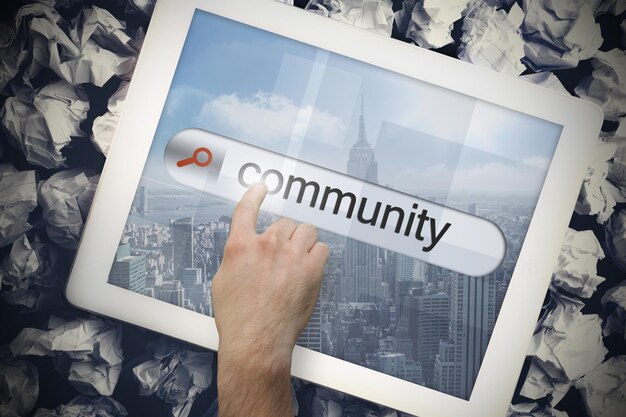
- Encourage Participation: Launch promotions or competitions to entice clients to talk about their experiences with your goods or services.
- Reshare and Recognize: To express gratitude to your clients and provide relatable content for your audience, highlight user-generated content (UGC) on your social media accounts.
- Increase Credibility: User-generated content (UGC) serves as social proof, which lends credibility to your company and makes it more approachable.
Example: A restaurant can reshare the best posts on their profile and encourage customers to use a branded hashtag when posting pictures of their meals.
3. Infographics and Blog Snippets: Share Value-Packed Content
Your brand can be positioned as a thought leader in your industry by using informative content. Blog snippets and infographics work especially well at simplifying difficult concepts into easily understood forms.

Infographics: Present information, ideas, or procedures using eye-catching visuals. Creating interesting infographics that are suited to your audience is simple with tools like Canva.
Blog Excerpts: To increase website traffic, provide the main conclusions or noteworthy details from your blog entries. For optimum effect, combine these tidbits with captivating images.
Educational Content: Write articles that address issues or provide answers to common queries from your audience.
Example: a fitness instructor may make an infographic about “5 Easy Exercises for a Stronger Core” and attach a link to a complete blog article with further information.
4. Hashtags: Boost Discoverability and Engagement
Hashtags are a straightforward yet effective technique for raising engagement and extending the reach of your content.

Branded Hashtags: To encourage people to tag your company in their postings, come up with a special hashtag for your campaign or brand.
Trending’s Hashtags: Use well-liked hashtags related to your sector or specialty to join in on hot discussions.
Hashtag Strategy: To reach both broad and specialized audiences, combine a variety of hashtags. For best results, most platforms advise using three to fifteen hashtags each post.
Example: a travel company can utilize hashtags like #TravelTuesday, #ExploreTheWorld, and #WanderlustAdventures to promote their trip packages to a larger audience.
Developing a Consistent Posting Schedule for Social Media Success
One of the most important elements in creating a powerful social media marketing tips presence is consistency. A consistent posting schedule guarantees that your audience will continue to think of your brand, fosters trust, and sustains engagement over time. Here’s how to create and stick to a blogging schedule using practical tools and techniques.

1. Content Calendar: Planning Ahead for Seamless Execution
The key to success on social media is a content calendar. It ensures a consistent flow of material across platforms by assisting you with post planning, organization, and streamlining.
- Why Use a Content Calendar?
- guarantees that you cover all significant occasions, promotions, and holidays.
- aids in preserving the harmony between entertaining, instructive, and promotional content.
- gives enough time for content production and evaluation, reducing last-minute stress and mistakes.
- How to Make a Calendar of Content

- How to Create a Content Calendar
- Determine the main themes or subjects for every month, such as industry developments, seasonal promotions, or new product releases.
- Depending on the interests of your audience, assign particular content categories (such as blog links, infographics, and videos) to each platform.
- For a calendar style that is accessible and well-organized, use programs like Trello, Notion, or Google Sheets.
- For instance, a clothing store could
Example: Weekly updates with user-generated material, seasonal trends, and special offers could be planned by a fashion retailer.
2. Best Posting Times: Timing is Everything
The exposure and engagement of your material can be greatly impacted by posting at the appropriate moment. Users are more likely to interact with your posts during peak activity hours on all platforms.
- How to Identify the Best Times to Post
- To find out when your audience is most engaged, use platform analytics tools such as Facebook Analytics, LinkedIn Analytics, or Instagram Insights.
- Try posting at various times and monitor performance indicators like reach, likes, comments, and shares.
- Take into account the time zones of your audience, particularly if your fan base is international.

- General Best Practices for Timing
- Facebook & Instagram: These platforms often function best in the mornings (6–8 AM) and evenings (6–9 PM).
- LinkedIn: Professional audiences are best reached between 8 and 11 AM on weekdays.
Example: To attract hungry customers, a meal delivery business may promote lunchtime deals at 11 AM or dinner promos at 6 PM.
3. Automation Tools: Streamline Your Posting Process
automation technologies are essential for consistency, particularly for companies that manage several platforms. These tools guarantee that your content goes up on schedule, save time, and require less manual labor.
- Popular Automation Tools
- Buffer: Work with your team, schedule articles for several platforms, and assess performance.
- Hootsuite: Plan posts, keep an eye on brand mentions, and manage all your social media accounts in one location.
- Later: With capabilities for scheduling and visualizing postings, it works especially well on visual sites like Instagram.

- Benefits of Automation
- Be consistent even while you’re on vacation or at hectic times.
- automatically adjust posting times in accordance with platform suggestions.
- Monitor and evaluate outcomes to improve your content strategy.
Example: To guarantee regular updates even during the busiest holiday seasons, a travel firm can use Hootsuite to plan motivational travel posts and promos weeks in ahead.
Tips for Maintaining Consistency
- Set Realistic Goals: As you become more accustomed to posting, gradually raise the frequency to a realistic level, such three posts per week.
- Repurpose Content: To save time and preserve diversity, creatively repurpose posts that perform well.
- Monitor and Adjust: Examine analytics frequently to determine what is effective, then modify your posting schedule for best outcomes.
Engaging with Your Audience: Building Relationships on Social Media
Success on social media Marketing tips involves more than just sharing content; it also involves establishing deep connections that foster loyalty and trust. By interacting with your audience, you humanize your business and create a feeling of community that makes your followers feel acknowledged and appreciated. Here are some ways for successfully interacting with your audience.

1. Respond to Comments and Messages: Show Your Audience You Care
Actively responding to your audience’s interactions is one of the easiest yet most powerful methods to keep them interested. Taking the time to respond shows that you appreciate their opinions, whether it’s through a direct message, a mention, or a remark on a post.
- Why It Matters
- enhances the bond between your brand and its supporters and fosters trust.
- increases visibility through social media algorithms by enticing more users to engage with your content.
- helps you instantly respond to consumer questions, grievances, or comments.
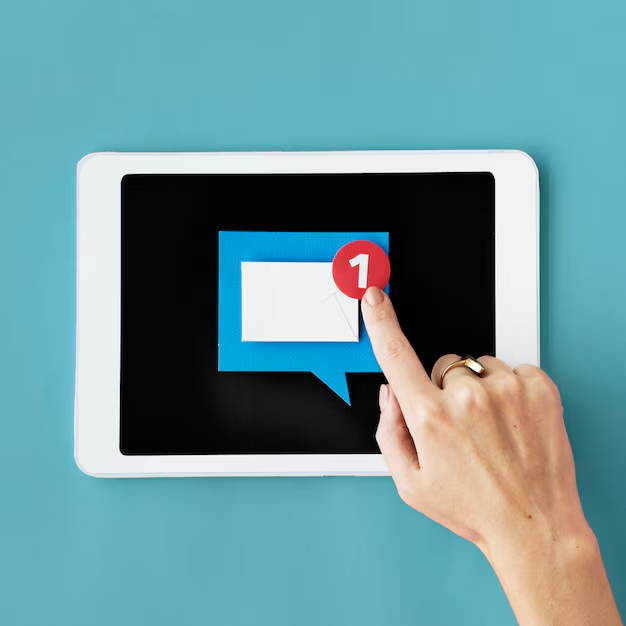
- Best Practices
- Be on time: Try to answer questions from customers, in particular, within a few hours.
- Personalize responses: Instead of using generic responses, address users by name and write intelligent ones.
- Stay Professional and positive :Keep your tone civil and helpful even while responding to criticism.
- Example: a cosmetic firm may respond to a customer’s comment inquiring about the availability of a product by saying: “Hey Sarah! We appreciate your interest in our recently launched moisturizer. Right now, it’s available on our website and in stock. If you have any questions, please contact us.
2. Polls and Surveys: Involve Your Audience in Meaningful Ways
Surveys and polls are interactive tools that increase participation while also offering insightful information on the tastes and viewpoints of your audience.
- Benefits of Polls and Surveys
- Encourage followers to participate actively so they feel heard and involved.
- provide information about consumer preferences so you may better customize your products or content.
- act as entertaining, captivating material that motivates people to engage.

- How to Use Them Effectively
- Don’t complicate: Make participation simple by asking direct questions.
- Align with your brand: Pose inquiries about your products or industry.
- Follow-up: Express gratitude to participants or share the poll’s results.
Example: A café can question its followers, “Which is your favorite coffee flavor—caramel macchiato or mocha?” via Instagram polls. then utilize the outcomes to highlight the victor in upcoming campaigns.
3. Host Contests and Giveaways: Incentivize Engagement
Giveaways and contests are tried-and-true strategies for boosting brand awareness, gaining new followers, and encouraging high levels of involvement.
- Why They Work
- Give consumers a compelling reason to interact with your brand.
- Promote user-generated content that can be used for marketing, like images or testimonies.
- Increase brand awareness, particularly if the offer includes a premium good or service.

- How to Run a Successful Contest or Giveaway
- Set clear goals: Decide if you want to promote a product, increase engagement, or get more followers.
- Make participation simple: For instance, ask them to follow your page, like the post, and tag a friend in order to join.
- Offer a compelling reward: Make sure the reward fits your brand and appeals to your target market.
- Promote the contest: To increase visibility, make use of posts, stories, and cross-platform marketing.
Example: To enter a contest and earn a gift card, a fashion company may invite participants to submit pictures of themselves wearing their clothing with a branded hashtag.
Tips for Enhancing Audience Engagement
- Acknowledge Loyal Followers: Give shoutouts or special prizes to your most engaged followers.
- Create Shareable Content: To entice readers to share your pieces, provide relatable, educational, or interesting content.
- Use Emojis and Call-to-Actions (CTAs): Employ call-to-actions (CTAs) and emojis to personalize your content and encourage readers to take action, like, comment, or share.
Leveraging Paid Advertising: Maximizing Visibility and Engagement

One of the most effective ways to target a certain audience, increase brand awareness, and accomplish marketing goals is through paid social media advertising. You may design very successful campaigns that are suited to your objectives by utilizing each platform’s distinct features and targeting capabilities. A thorough analysis of sponsored advertising on well-known social media networks may be seen below.
1. Facebook and Instagram Ads: Precision Targeting and Versatility
Facebook and Instagram advertising, which are a part of Meta’s ecosystem, offer a wide range of targeting choices and creative flexibility, which makes them perfect for reaching a variety of audiences.
- Benefits
- access to sophisticated audience targeting that takes into account past interactions as well as demographics, hobbies, and habits.
- Creative storytelling is made possible by a variety of ad forms, including as reels, video, story, and carousel advertising.
- Retargeting features allow you to reconnect with customers who have previously interacted with your business.

- Key Features
Custom Audiences: Make lists based on website visitors or current clients.
Lookalike Audiences: Look for new people who resemble your current audience.
Ad Placements: To maximize ad visibility, select from feeds, stories, reels, or the Audience Network.
Example: a skincare company can target women in the 25–35 age range who are interested in wellness and beauty by creating Instagram ads with product instructions. This will improve sales.
2. LinkedIn Ads: B2B Marketing for Professionals
For B2B companies trying to get in touch with experts and decision-makers, LinkedIn is the preferred medium.
- Benefits
- access to a highly focused audience according to professional skills, industry, job title, and firm size.
- Perfect for advertising expensive services, promoting thought leadership content, and creating leads.
- useful for establishing trust and credibility in professional networks.

- Key Features
- Sponsored Content: Promote posts that show up in users’ newsfeed with sponsored content.
- Message Ads: For campaigns with a big impact, send users customized messages straight to their inboxes.
- Lead generation forms: Gather user information on LinkedIn without sending users to other websites.
Example: a software company can use LinkedIn to target CEOs and IT managers of businesses with more than 200 workers and provide a free product sample.
3. Pinterest: Creative Solutions for Unique Audiences
With innovative ad formats and captivating content, Pinterest provide specialty opportunities to connect with particular audiences.
- Pinterest Ads:
- Perfect for visually-driven fields including DIY projects, fashion, and home décor.
- Promoted pins are less obtrusive because they blend in well with natural content.
- Use keywords, interests, or previous search activity to target audiences.

Example: a company that sells home décor can draw in customers who are considering remodeling by using promoted pins that feature chic room arrangements.
Tips for Effective Paid Advertising on Social Media
- Establish Specific Goals: Specify your goals, such as raising brand recognition, boosting website traffic, or producing leads.
- Make Eye-Catching Images and Copy: Ads with attention-grabbing images and succinct, convincing language can draw in viewers and encourage clicks.
- Monitor and Optimize: Track performance indicators such as engagement, ROI, and CTR using platform analytics, then modify your campaigns as necessary.
- A/B testing: Try out several ad types, headlines, and images to see which ones your audience responds to the most.
- Budget Allocation: To measure performance, start with a modest budget and increase it once you determine what works.
Analyzing Performance and Metrics: The Key to Social Media Success

Regularly tracking and analyzing the performance of your social media campaigns is essential for ensuring they align with your business goals. By monitoring specific metrics, you can identify what works, refine your strategies, and maximize your return on investment (ROI). Here’s a detailed breakdown of the critical metrics to track and the tools to help you succeed.
1. Engagement Rate: Measuring Audience Interaction
One important measure of how well your content connects with your audience is the engagement rate. It calculates how frequently interactions—likes, comments, shares, saves, and clicks—occur in relation to the number of your followers or impressions.
- Why It Matters:
- A high level of involvement suggests that your audience will find your information meaningful and pertinent.
- Highly engaging material is given priority in the algorithms of social media platforms like Facebook and Instagram, which boosts visibility.
- How to Calculate:
- (Total Engagements / Total Followers) times 100 is the engagement rate.
- As an alternative, compute using impressions: (Total Impressions / Total Engagements) × 100 Increasing Engagement

Improving Engagement:
- Post interactive articles, polls, and other stuff that encourages discussion.
- To promote a feeling of community, reply to messages and comments.
- To attract attention, use eye-catching images and subtitles.
Example: a fashion firm observes that posts with influencer partnerships have a greater interaction rate than ordinary posts, at 15%. Future content can be guided by this understanding.
2. Reach and Impressions: Understanding Content Visibility
You can determine how widely your material is being read and distributed with the use of these indicators.
Definition:
- Reach: The distinct quantity of individuals who view your material.
- Impressions: The total number of times your material appears, even if the same individual views it more than once.
- Why It Matters:
- A high reach indicates that new people are watching your material.
- How well your content retains audience interest over time can be determined by tracking impressions.

Strategies to Increase Reach and Impressions
- Utilize pertinent hashtags to increase the discoverability of your postings.
- To reach their audiences, work together with influencers.
- Try different marketing strategies to reach more people than just your natural readership.
Example: a café that runs a weekend promotion finds that postings using location-based hashtags receive 25% more views, which encourages them to employ more regional tags in subsequent marketing efforts.
3. Conversion Rate: Tracking Desired Actions
The percentage of users who complete a certain action—like buying something, subscribing to your newsletter, or downloading an app—after engaging with your social media content is known as the conversion rate.
- Why It Matters:
- shows how well your material produces significant results.
- connects social media initiatives to observable business outcomes, which aids in ROI assessment.
- How to Calculate:
- Conversion Rate = (Conversions / Total Clicks) × 100
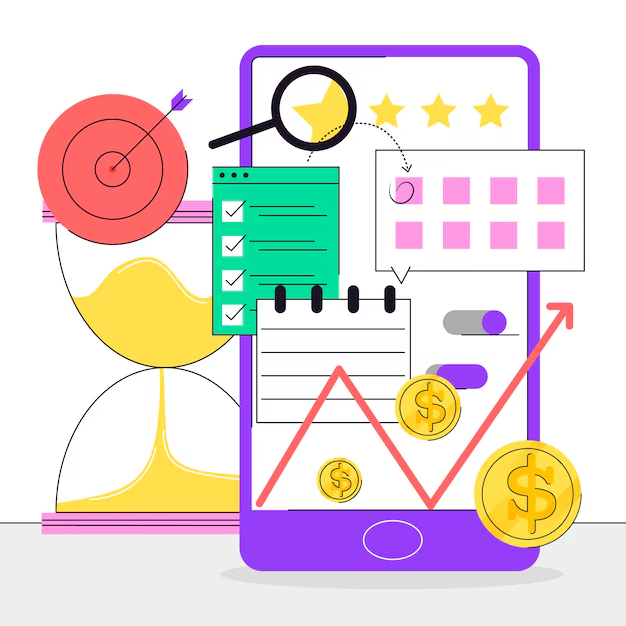
- Improving Conversion Rate
- Make use of appealing and unambiguous call-to-actions (CTAs) to direct users.
- To guarantee a flawless user experience, make landing pages simpler.
- Provide incentives to promote conversions, such as free trials or discounts.
- As an illustration of the effectiveness of time-sensitive promotions, an online clothes retailer reports a 10% conversion rate from Instagram advertisements using a temporary coupon code.
Example: An online clothing store sees a 10% conversion rate from Instagram ads featuring a limited-time discount code, highlighting the success of time-sensitive offers.
4. Tools for Performance Tracking
Use analytics tools to monitor important variables and obtain in-depth insights.
Google Analytics:
- Monitor social media-driven website traffic.
- Track user activity, campaign-related conversions, and bounce rates.
Facebook Insights and Instagram Insights
- Examine KPIs unique to each platform, including interaction, reach, and impressions.
- To improve targeting, examine audience demographics and behavior.

Sprout Social and Hootsuite Analytics
- Using a single dashboard, track performance across several platforms.
- Create thorough reports to gauge the success of campaigns.
Other Tools
- Buffer Analytics: Determine the optimal posting timings and gauge interaction.
- Twitter Analytics: Pay attention to follower growth, tweet performance, and impressions.
Tips for Effective Analysis
- Set Clear Objectives: Decide what you hope to accomplish, such as conversions, engagement, or brand exposure.
- Track Trends Over Time: To identify patterns and modify tactics, compare performance on a weekly or monthly basis.
- A/B Testing: To determine what works best, try a variety of ad formats, posting schedules, and content genres.
- Take Action on Insights: Make use of the data to improve spending, targeting, and content.
Tools for Social Media Marketing: Simplifying and Enhancing Your Strategy
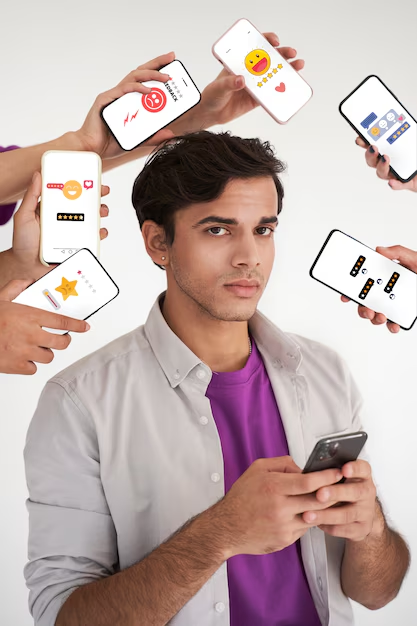
Your social media marketing tips efforts can be streamlined with the aid of the appropriate tools, which will enable you to plan posts, produce interesting content, track results, and keep ahead of the curve. Here’s a thorough examination of four crucial tools and how they may improve your social media marketing tips
1. Canva: Designing Stunning Visual Content
With the help of Canva, a user-friendly design platform, marketers can produce excellent images without needing to know how to design.
- Key Features
- Templates: Thousands of editable templates for infographics, advertisements, stories, posts, and more.
- Drag-and-Drop Interface: Easy-to-use tools for adding icons, text, and photos.
- Brand Kit: Keep colors, typefaces, and logos in one location to preserve brand coherence.
- Content for All Platforms: pre-sized templates for social media sites such as Facebook, LinkedIn, Pinterest, and Instagram.

- Use Cases:
- Create captivating Instagram stories that draw viewers in with animations.
- To showcase several products, make captivating ad graphics for Facebook or carousel posts.
- Create branded infographics to distribute statistical or instructional content.
2. Hootsuite / Buffer: Efficient Social Media Management
Social media management tools like Hootsuite and Buffer assist marketers in scheduling posts ahead of time and managing numerous accounts, which ensures consistency and saves time.
- Key Features:
- Post Scheduling: Using a single dashboard, plan and schedule content for several platforms.
- Content Calendar: To guarantee a well-rounded and reliable approach, visualize your posting timetable.
- Analytics and insights: Keep an eye on performance indicators such as click-through rates, reach, and engagement.
- Teamwork: Assign duties, go over posts, and cooperate with other team members.
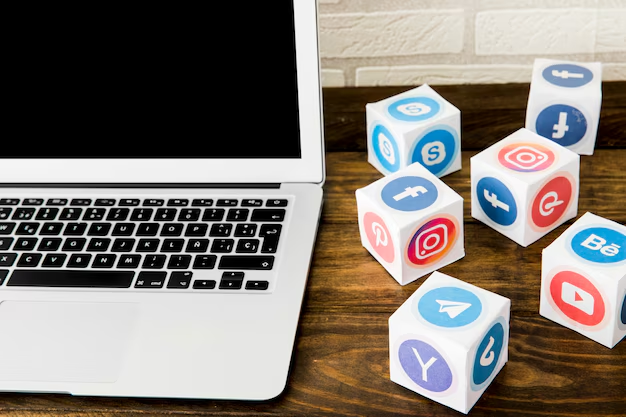
- Use Cases
- Plan all of your Instagram, Facebook, and Twitter posts for the next week at once.
- Based on audience engagement, use analytics to identify the optimal posting times.
- Keep an eye on mentions and reply to audience inquiries straight from the website.
Example: Hootsuite is used by a travel business to schedule posts for their advertising of Bali vacation packages, making sure that they go live during times when people are most engaged across time zones.
3. Bozsumo : Discovering Trending Topics and Influencers
BuzzSumo is an effective tool for performance measurement, influencer finding, and content research. It assists marketers in being current and producing audience-resonant content.
- Key Features
Trending Content: Examine the most shared posts, videos, and articles to see what’s popular in your niche.
Competitor Analysis: Analyze your competition to find out what they are creating and what is effective for them.
Influencer Discovery: Look for industry influencers to work with on campaigns.
Content Insights: Examine which post formats—such as listicles or videos—produce the highest levels of interaction.
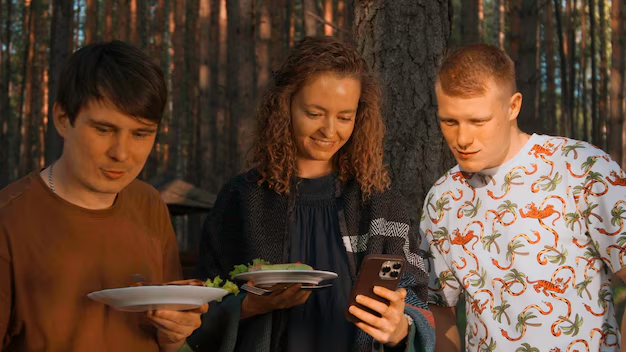
- Use Cases:
- Look up popular hashtags or subjects for a campaign aimed at a particular audience.
- Find influential people in your business and get in touch with them.
- To increase visibility, create blog entries or social media content about trending subjects.
Example: After learning about the success of “10-Minute Workouts” on BuzzSumo, a fitness business produces a series of short workout videos that receive a lot of engagement.
4. Sprout Social: Comprehensive Social Media Management and Analytics
Sprout Social is an all-in-one social media management application made for companies looking for solutions for consumer engagement, scheduling, and advanced analytics.

- Key Features:
- Manage mentions, comments, and messages from all platforms in one location with the Unified Inbox.
- Post Scheduling and Publication: Easily plan and publish content on many platforms.
- Comprehensive Analytics: Monitor KPIs such as campaign performance, audience growth, and engagement.
- Social listening: Keep an eye on discussions and mentions about your company or sector.
Example: The performance of LinkedIn postings aimed at IT managers is monitored by a SaaS company using Sprout Social’s analytics, resulting in customized content that doubles audience engagement.
Choosing the Right Tool for Your Needs
- For Visual Content Creation: Canva is the greatest option for companies that prioritize branding and aesthetics when it comes to creating visual content.
- For Multi-Platform Management: Buffer and Hootsuite make scheduling and account management across platforms easier.
- For Research and Influencer Collaboration: BuzzSumo offers information on how to keep ahead of trends and identify the best influencers for research and influencer collaboration.
- For Advanced Analytics and Engagement: Companies looking for thorough analytics and real-time client interaction might consider Sprout Social.
F.A.Q.S
- What is social media marketing (SMM)?
Social media marketing involves using social platforms like Facebook, Instagram, LinkedIn, and TikTok to promote a brand, engage with audiences, and drive business growth. - Why is social media marketing important for businesses?
It helps build brand awareness, foster customer relationships, generate leads, and boost sales. - What are the best platforms for social media marketing?
The best platforms depend on your target audience. Popular options include Facebook, Instagram, LinkedIn, TikTok, and X (formerly Twitter). - How often should I post on social media?
Consistency is key. Aim for at least 3-5 posts per week, adjusting based on platform-specific best practices and audience engagement. - What is the difference between organic and paid social media?
- Organic: Content shared without paid promotion.
- Paid: Ads or sponsored posts targeting a specific audience for greater reach.
- What type of content works best on social media?
Visual content, such as videos, images, infographics, user-generated content, and interactive posts like polls and quizzes, tends to perform well. - How do I create engaging content?
Focus on providing value—whether it’s through education, entertainment, or inspiration. Use high-quality visuals, compelling copy, and relevant hashtags. - What are hashtags, and why are they important?
Hashtags help categorize content, making it discoverable to a broader audience interested in that topic. - Can I repurpose content across platforms?
Yes, but tailor it for each platform. For example, long-form content for LinkedIn, short videos for Instagram, and quick updates for X. - How do I make my posts visually appealing?
Use tools like Canva to design eye-catching graphics and maintain a consistent brand style (colors, fonts, and imagery). - How do I choose the right platform for my business?
Identify your target audience and research where they spend their time online. Use platforms that align with your brand’s objectives. - What is a content calendar, and why is it essential?
A content calendar organizes your posting schedule, ensuring consistency and balance in your content themes. - What is social media listening?
Social media listening involves monitoring conversations about your brand, industry, or competitors to gather insights and engage proactively. - How do I determine my social media goals?
Align your goals with business objectives, such as increasing brand awareness, driving website traffic, or generating leads. - What’s the importance of a call-to-action (CTA)?
CTAs guide your audience to take desired actions, such as visiting your website, signing up for newsletters, or making a purchase. - Which metrics should I track for social media success?
Key metrics include engagement rate, reach, impressions, follower growth, and conversion rate. - How do I measure ROI in social media marketing?
Compare the cost of campaigns to the revenue or conversions generated. Tools like Google Analytics can help track ROI. - What tools can I use to analyze social media performance?
Use analytics tools like Facebook Insights, Instagram Insights, Google Analytics, and third-party platforms like Sprout Social or Hootsuite. - How do social media ads work?
Paid ads target specific demographics, interests, or behaviors, increasing visibility and driving targeted actions like clicks or purchases. - What is the budget I need for paid social media ads?
Budgets can vary. Start small, test campaigns, and scale based on performance. Even $5–$10 per day can deliver measurable results on platforms like Facebook or Instagram.